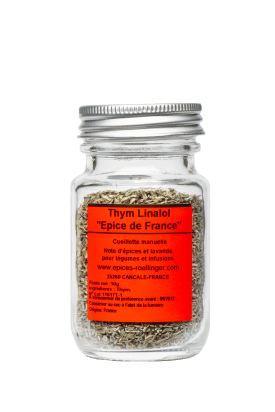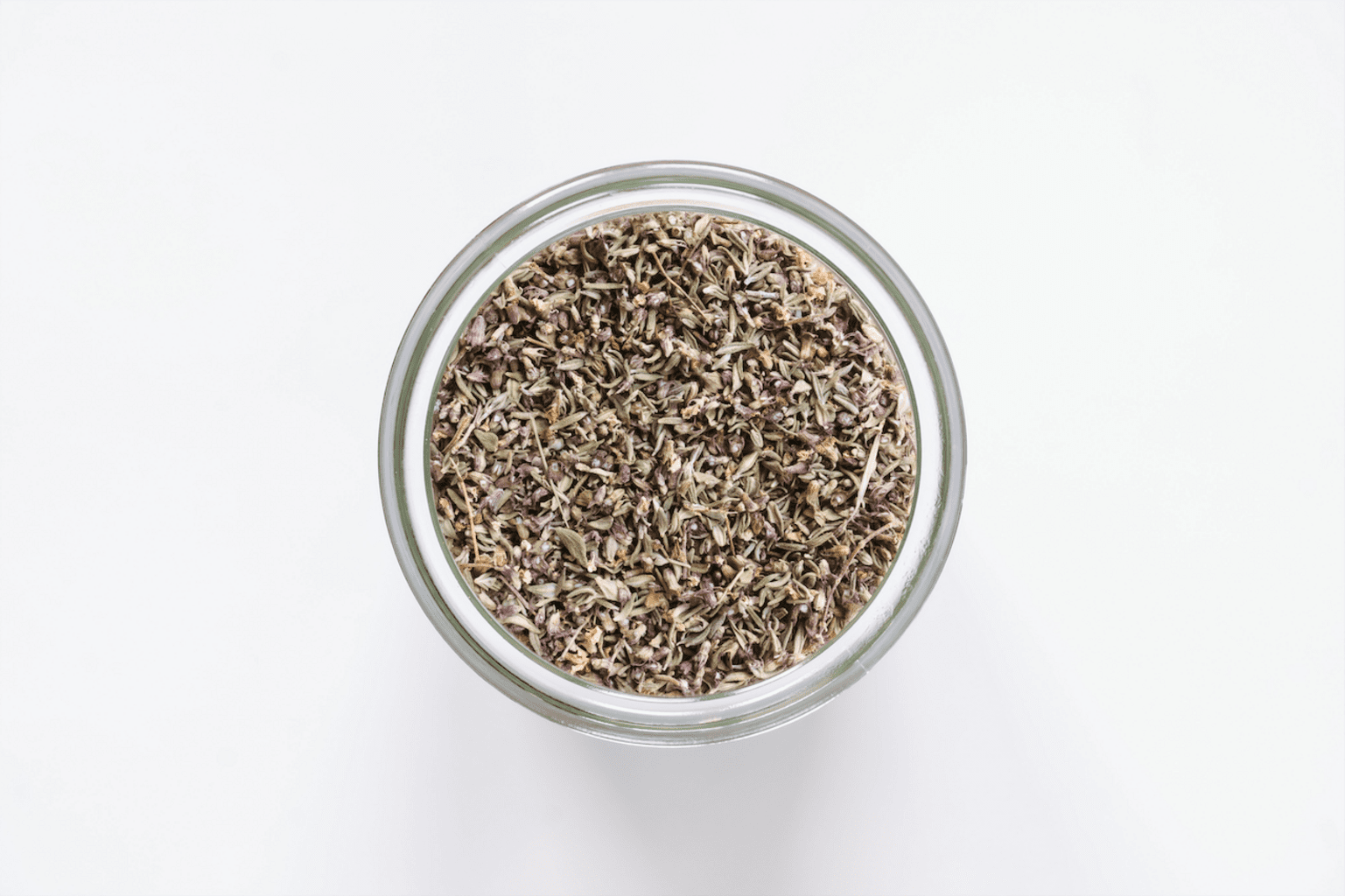Thym sauvage à linalol (Wild linalol thyme)

Ingredients: Linalol thyme from organic farming
A thyme with hints of lavender and spice. Use to season vegetables.
Rare spices
€7.00
10 g
Recommendations
Wild linalol thyme is particularly suited for vegetable dishes and its sweetness appeals to children. It makes a delicious herbal tea to be sipped in the evening before bed.
To make the tea: Steep 1 teaspoon thyme for each cup of just-boiling water 4 to 5 minutes.
To make the tea: Steep 1 teaspoon thyme for each cup of just-boiling water 4 to 5 minutes.
-
Allergens
Absent, except for cross-contamination.
May contain traces of sesame, celery, mustard, soy. - Origin France
- Storage / Use In a dry, dark place such as a closed cupboard.
€700 / kg
Olivier Rœllinger's words
Wild linalol thyme smells like the garrigue in the South of France—with a hint of bergamot. It's a thyme to be used with vegetables that I also like to steep as an herbal tea in winter.
Story
Thyme (Thymus vulgaris) is an aromatic herb that spreads in fragrant mats over sunny, dry scrubland areas (garrigues, in French). In the garrigues of Southern France, wild thyme is harvested by hand in the early spring using small sickles, a technique that is in keeping with traditional, sustainable, organic farming practices. Once harvested, the leaves are subjected to gentle drying methods to retain all of their aromatic properties.
Wild thyme varieties have evolved to adapt to different climates by altering their essential oil compositions. This results in the the wide range of scents and flavors found in different types of thyme.
Ancient Egyptians and Greeks were familiar with thyme and used it extensively. Thyme has also been called 'the secret ingredient in French cooking' by foreign food writers. The herb is found in many traditional French recipes, including pot-au-feu (French pot roast), boeuf bourgignon (beef stew with red wine), and cassoulet. Thyme is also an essential component of the French 'bouquet garni.'
Wild thyme varieties have evolved to adapt to different climates by altering their essential oil compositions. This results in the the wide range of scents and flavors found in different types of thyme.
Ancient Egyptians and Greeks were familiar with thyme and used it extensively. Thyme has also been called 'the secret ingredient in French cooking' by foreign food writers. The herb is found in many traditional French recipes, including pot-au-feu (French pot roast), boeuf bourgignon (beef stew with red wine), and cassoulet. Thyme is also an essential component of the French 'bouquet garni.'
